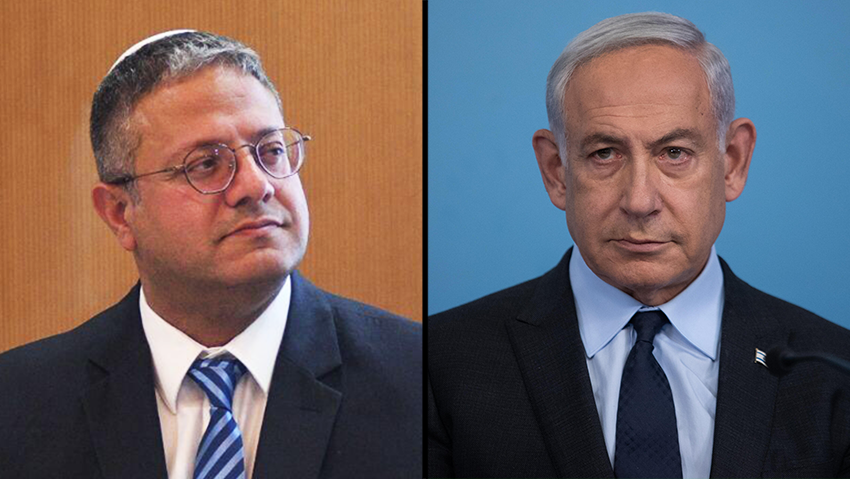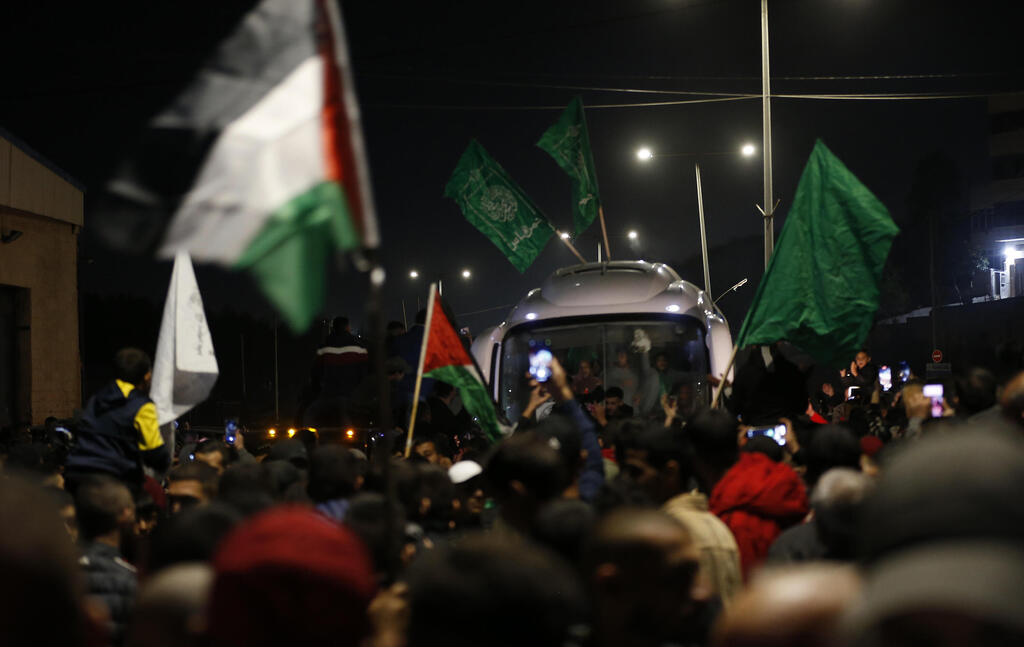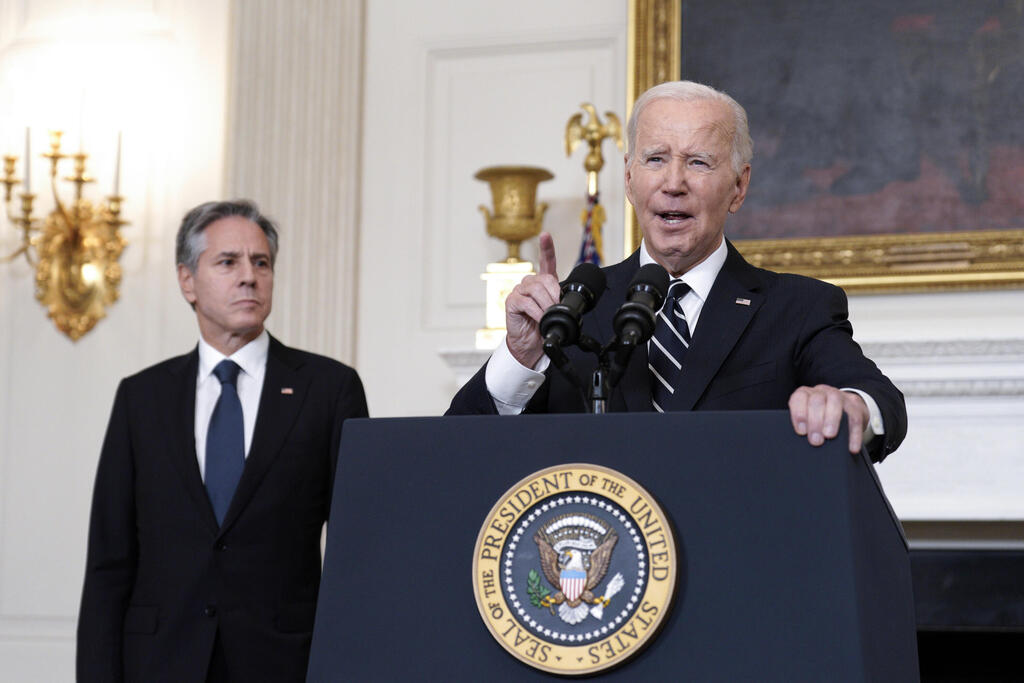Despite the U.S. reporting progress and optimism in Egypt saying a hostage deal and cease-fire agreement with Hamas can be reached by next week, the path to achieve this remains long, and negotiations are expected to be challenging.
Read more:
Israel, the United States, Qatar, and Egypt have reached a consensus on a deal that entails a 45-day cease-fire for the release of Israeli hostages. The agreement will also involve the release of Palestinian prisoners, with specific details, such as the number of terrorists to be released for each hostage and the identity of the prisoners, to be discussed between the sides. Additionally, the amount of humanitarian aid entering Gaza will be increased.
4 View gallery


Netanyahu desperate to keep Ben-Gvir in the government
(Photo: Rafi Kutz, Alex Kolomoisky)
How many prisoners will Israel release?
Once Hamas declares it accepts the initial deal, intensive negotiations will commence on its key points. It's evident Hamas won't accept the previous deal's agreement of releasing three Palestinian prisoners for every Israeli hostage.
In the previous agreement, Israeli women and children up to the age of 19 were released in exchange for the release of female Palestinian prisoners and minors. This time, however, Hamas is expected to demand a more significant number of prisoners.
According to reports, Hamas may demand anywhere between 100 to 300 prisoners for every released hostage. Hamas' conditions for the return of Israeli bodies held in Gaz are still unclear, and it's unknown if the terror group will agree to exchange them for the bodies of Hamas terrorists or whether it will ask for the release of additional prisoners.
Hamas currently holds 136 Israeli hostages, 29 of whom are confirmed deceased, and four individuals who were already held in Gaza before the October 7 attack. If Hamas's demands are met, it could potentially lead to the release of thousands of Palestinian prisoners. It's also known Hamas will demand the release of terrorists who carried out attacks against Israelis in exchange for IDF soldiers held in the Strip.
Netanyahu's red line
On Tuesday, Prime Minister Benjamin Netanyahu drew a line in the sand, saying that "thousands of terrorists won't be released." Reports have indicated the potential release of 5,000 to 4,000 terrorists in the deal, making it the highest number of prisoners ever released by Israel.
However, sources close to National Security Minister Itamar Ben-Gvir view this as a trial balloon from Netanyahu's circle. They believe it to be a strategic move made for the deal to be seen as a success for Netanyahu even if half of the proposed number of Palestinian prisoners would be eventually released.
4 View gallery


Netanyahu unwilling to release thousands to make the deal happen
(Photo: EPA/ALAA BADARNEH)
Nevertheless, the government acknowledges the immense difficulty involved in reaching a deal, even if Israel exerts significant effort to minimize the number and severity of prisoners, while trying to avoid releasing terrorists involved in major terror attacks.
Once the key points have been agreed on, additional issues will need to be addressed. For instance, Hamas insists on the IDF's complete withdrawal from Gaza. In the previous agreement, the IDF withdrew to defensive lines and prevented the return of Gazans from the southern to the northern part of the Strip.
Hamas' insurance policy
Another question will need to be discussed in the negotiations: Can Israel prevent Gazans from arriving in Gaza's north for 45 days? And what happens after the 45-day cease-fire? It's reasonable to assume that Hamas will insist on assurances from Israel to prevent a return to the fighting, which is considered a red line from Israel's perspective. Netanyahu emphasized, "The IDF will not withdraw from the Strip. We will not end this war without achieving all of its objectives."
In any case, it's likely Hamas will make every effort to hold hostages and bodies as a form of insurance. Israel will need to introduce ways to ensure that Hamas does not violate the agreement during the negotiations.
In the previous agreement, Hamas violated it by withholding the release of women, allegedly to prevent the exposure of sexual assaults they experienced while in captivity. It can be assumed Israel has learned from this and will take steps to prevent a recurrence of such incidents.
As for the timing of the deal, Egyptian reports said Tuesday that an agreement may be reached at the beginning of the week, with an immediate cease-fire taking effect. However, this appears to be wishful thinking. Even if Hamas responds positively, intensive negotiations will commence, and intelligence agency teams are expected to travel to Qatar to pursue them.
Therefore, Israel believes it'll take several days of discussions before a concrete deal is reached. Only then will the document undergo approval in the War Cabinet, Security Cabinet, and the government. Unlike the relatively smooth first deal, it's widely understood this will be a different and more challenging process.
If the reports are even partially correct, involving the release of thousands of Palestinian prisoners, changes in the government's composition should be taken into account - something Netanyahu isn't in favor of. Opposition leader Yair Lapid has already announced his intention to deploy a "safety net" for the captive deal. However, Netanyahu is unlikely to rely on him and will step out of his role to persuade Ministers Itamar Ben-Gvir and Bezalel Smotrich not to dismantle the government.
A deal is likely with Biden's involvement
According to an Israeli source, a deal is very likely because of one reason: U.S. President Joe Biden is determined to end the war and hopes that a captive deal would lead to a long-lasting cease-fire.
To facilitate this, U.S. Secretary of State Antony Blinken is expected to arrive in Israel on Saturday. According to a senior American official, Blinken will discuss the hostage deal, as well as post-war Gaza, and normalization with Saudi Arabia.
U.S. news outlet Bloomberg reported Tuesday that the Saudis have renewed contacts with the United States defense pact for the first time since its suspension at the beginning of the war.
The Americans see an opportunity to leverage the cease-fire to revive negotiations for normalization between Israel and Saudi Arabia. These negotiations could serve as an incentive for Netanyahu to prolong the cease-fire.





